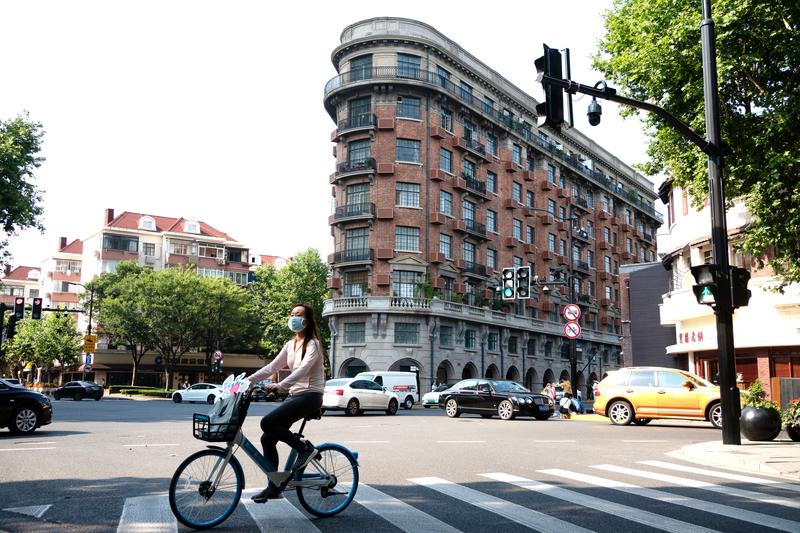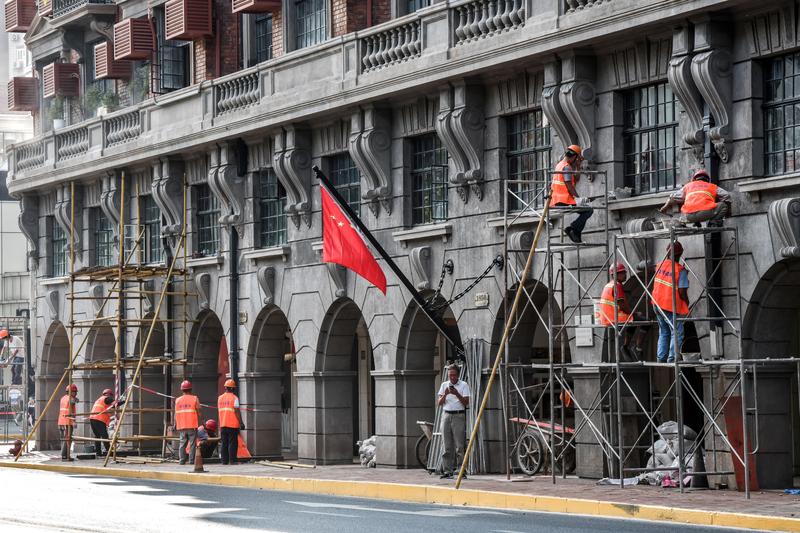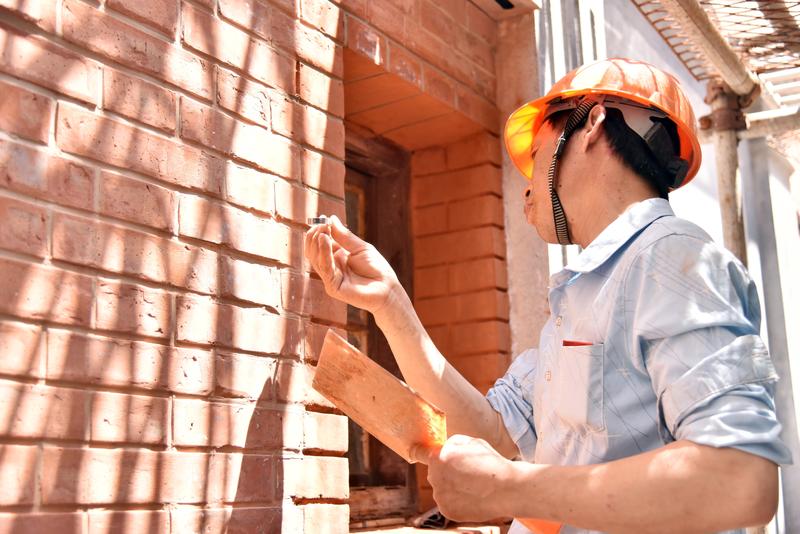Giving historical buildings a new look while retaining their original essence has become a major project for a company, Cao Chen reports in Shanghai.
 The iconic Wukang Mansion at the junction of Wukang Road and Huaihai Middle Road is one of the most celebrated historical buildings in the former French concession area in Shanghai. (GAO ERQIANG / CHINA DAILY)
The iconic Wukang Mansion at the junction of Wukang Road and Huaihai Middle Road is one of the most celebrated historical buildings in the former French concession area in Shanghai. (GAO ERQIANG / CHINA DAILY)
Cement might be a common construction material today, but the use of this seemingly mundane substance in old buildings can at times reveal interesting features to architects. "Cement is commonly stored in bags these days. But a century ago, it was such a rare and expensive material that it was kept in barrels. When you see historical garden houses in Shanghai with cement structures, it means their developers or owners were wealthy," says Gu Zhifeng, general manager of Shanghai Xufang Construction Industry Co.
Hidden details are part of reasons behind Gu's passion in restoring old buildings. He has been doing this for 14 years. Such details also help him to determine how he goes about giving ancient structures a new breath of life while also retaining their original charm.
We preserve traces that tell of the building’s history, but remove those that aren’t aligned with today’s safety standards
Gu Zhifeng, general manager of Shanghai Xufang Construction Industry Co
Established in 1990, the company is one of many enterprises enlisted by the municipal government to restore historical buildings that have fallen into disrepair. The company's latest major undertaking is the restoration of buildings in a 2.8-square-kilometer zone in the former French concession area. A part of the Hengfu historical and cultural area, which has a history dating back to the time when the city opened its port to foreign trade in the 1900s, this zone has many old buildings, some of which were once homes of famous personalities such as the Chinese author Ba Jin (1904-2005).
Many buildings in this zone have been listed as historical structures under government protection.
"This unique cluster of modern buildings is believed to be the largest of its kind in the city. It is special as it features buildings that integrate Chinese architectural styles with Western facades," Gu says. "However, most buildings are predominantly built with wood and brick, not concrete. This means they can be easily damaged by woodworm infestation or high humidity. It's our duty to preserve these traces of history, with a focus on craftwork and architectural design. We're here to give new life to the structures."
 The mansion undergoing restoration. (PHOTO PROVIDED TO CHINA DAILY)
The mansion undergoing restoration. (PHOTO PROVIDED TO CHINA DAILY)
According to Gu, the restoration of protected buildings is nothing like constructing a new one as special preparation must be made. For example, the sand used to restore protected buildings must be filtered two more times than usual to make it suitable for the old structures.
The bricks have to be custom-made, too.
Gu says three types of bricks need to be smashed and mixed to form new bricks that are of similar color and quality to the original.
One of the most arduous projects undertaken by the company in recent times is the restoration of a garden residence at 63 Kangping Road, which is located within the zone. Built in the 1940s, this three-story house, with semi-circular balconies on each floor and a red brick facade, has been designated a cultural relic. To restore the building, the team at Shanghai Xufang had to do research on the original style of the structure and scour for the right materials that would allow the house to retain its look.
"The building had fallen into disrepair over the years due to poor management and human activities that left behind fragile windows and walls that had trouble keeping wind and water out," says Yue Jiayong, deputy manager of the restoration department of the company.
"As we weren't able to find ceramic tiles that are of the same size and material as those used on the walls of the kitchen, we had to purchase similar ones before cutting them into smaller pieces," says Zhu Yucheng, head of the Kangping Road project.
The windows were a challenge to replace as well. Zhu says the team took about three months just to manufacture more than 5,800 square meters of similar windows for the house as most of the handles on the previous ones had decayed beyond repair. While retaining the original look of the building was important, Gu and his team nonetheless had to introduce new elements required today.
 A worker repairs the red-brick wall of an old building in the Hengfu historical area in Shanghai. (PHOTO PROVIDED TO CHINA DAILY)
A worker repairs the red-brick wall of an old building in the Hengfu historical area in Shanghai. (PHOTO PROVIDED TO CHINA DAILY)
A case in point is the installation of a digital-monitoring system in the Wukang Mansion that helps with the management of the building. The team also had to move air conditioning units to the interior of the building due to safety concerns.
"We preserve traces that tell of the building's history, but remove those that aren't aligned with today's safety standards. Some might think that building restoration is all about replacing the old with the new, but I treasure the imperfections that have been created by either time or human activities," says Gu. "After all, buildings are for people, and it is only through these traces that we can learn about the background of a building."
Professionals like Gu are presently highly sought after as the city has focused on restoring old buildings in the past decade. The supply of such professionals, unfortunately, is unable to keep up with the demand.
"Most architecture graduates today prefer working on new buildings as such careers pay more than those related to restoring old ones,"Gu says. "Also, such restoration skills are still mainly handed down from master to apprentice today, meaning that these techniques will likely be lost eventually as experienced professionals don't have many people to pass on the skills to."
To address this situation, Shanghai Xufang has been cooperating with technological enterprises and universities to broaden the knowledge of this practice.
The company has established a training base where retired restoration experts provide technique training, as well as cultural experience and data management lessons. Lectures, workshops, classes and tests are also held on a regular basis.
"Weeks ago, a retired bricklayer who came to lecture at the workshop told me in private that he was willing to share the craftsmanship manuals he used in the 1950s-which are as precious as archived literature-with the young generations," Gu says. "What is important now is that we preserve not just historical buildings but also the knowledge of restoring them."
Contact the writer at caochen@chinadaily.com.cn


